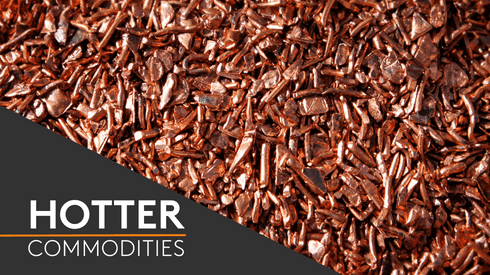South Africa entered the lockdown – initially for three weeks – on Thursday March 26, creating uncertainty over loading at ports, including Durban, which is frequently used for the shipment of Democratic Republic of the Congo-mined cobalt hydroxide to Asia.
Cobalt suppliers have, therefore, been looking at alternative shipping routes to minimize their exposure to delays in loading and shipment out of South Africa, or protracted border or port closures stemming from the lockdown.
“There are a lot of doubts about whether you can make shipments in April, maybe into May,” a supplier source said.
“Hopefully the South Africa situation will be relatively short-lived, but it’s still a massive short-term supply disruption. There’s going to be a big backlog,” a second supplier said.
As long as the South Africa lockdown stands at three weeks, some are considering sitting it out, especially since Chinese demand for cobalt hydroxide had thinned in March.
“It’s three to four weeks moving material [down to the port] anyway, then waiting two weeks for a vessel. South Africa could be back up by then,” the second supplier said.
Weaker buying has put pressure on intermediate payables (the percentage of the standard-grade metal price paid for raw material), which on March 25 fell to recent lows of 62.5-64.5% of the metal price.
Fastmarkets’ assessment of the cobalt hydroxide payable indicator, min 30% Co, cif China was at 64-65% on April 1, down by 5.5% from highs of 67-69.5% a month ago.
Similarly, the cobalt standard grade, in-whs Rotterdam metal price was assessed at $15.90-16.45 per lb on Wednesday, down by 5.9% from $17-17.40 per lb at the start of March.
Sources in China said suppliers are negotiating with their long-term contract customers about delaying shipments instead of declaring force majeure due to South Africa’s lockdown. With no immediate need to restock, some customers are likely to accept the delay, either with the same terms or on the condition the quotation period (QP) is changed accordingly, sources said.
“The majority of consumers in China are not in any rush for feedstock, given downstream demand has been so weak,” a trading source said. “In the negotiation [of a shipment delay], they might even renegotiate a more favorable QP.”
Some market participants are also eying stocks held in some Asia warehouses, which were put there as a way to meet Chinese buyers’ needs for prompt cargoes, and reducing exposure to Durban, which can be prone to bottlenecking anyway. Those volumes would not be sufficient to entirely fill a void in supply created if shipping disruptions persist for more than three weeks, sources added.
But there are expectations that the lockdown could be extended beyond 21 days, itself the maximum duration for which the South African government can impose a shutdown without seeking approval from parliament.
In effect, that a pronounced disruption in Durban shipments coincides with a period of limited demand and ample supply on the ground (or on the water) in China, creates some breathing space for suppliers to give consideration to the alternatives, and their scope to fill the gap in export capacity.
“There are some alternatives, but none is as solid as going through South Africa,” a third supplier said.
Other routes are not as well trodden, such as through Tanzania to ship out of Dar es Salaam or through Mozambique for Beira, but are under serious consideration by producers now more acutely aware of their dependence on Durban.
The alternatives bring with them other risks, including that they too will be subject to coronavirus-related restrictions, but they do limit producers’ – and their counterparties’ – exposure to bottlenecking, de-prioritization or other issues at a single port, in this case in South Africa.
DRC dependence
Other announcements over the past 10 days – a 48-hour lockdown in the DRC, and recommendations (later played down) that the Zambian border be closed – which could also present logistical concerns to the cobalt supply chain, have so far taken a relative backseat compared with the impact of South Africa’s lockdown.
Both Zambia and the DRC are dependent on their exports of copper and cobalt for royalties and foreign exchange income, which market participants hope will be incentive enough to keep routes flowing as much as possible.
On a practical level, in addition to exporting raw materials out of the country, a round trucking route also brings critical supplies back into the DRC.
Provided the DRC and Zambian borders stay open, movement of material to alternatives like Tanzania and Mozambique should, for a time, provide a logistical alternative to, and cut exposure to bottlenecks at, Durban.
But the routes are less established than that to Durban and might only provide a short-term or partial solution.
“It’s getting harder to get port availability. The alternatives are getting more and more congested and the next vessels often aren’t for four to six weeks,” the third supplier added.
On top of logistical concerns, the current dynamic also highlights the risk of a general supply dependence on hydroxide produced in the DRC.
The social distancing and quarantine measures enforced elsewhere in the world to curb the coronavirus pandemic will be incredibly difficult to implement in parts of Africa. Keeping borders open and trucking routes moving is one thing, but a Covid-19 outbreak in the DRC’s mining provinces would be difficult to manage and treat.
The resultant impact on mining operations could, sources say, paralyze production and override any other more bearish impact on cobalt demand due to the pandemic and resultant economic slowdown.
So far, supply side restrictions have been met with an incremental increase in payables. Underlying metal prices against which payables are settled have continued to weaken, albeit slowly, with the coronavirus-linked decline in demand overpowering, so far, a number of supply side drawbacks.
Nonetheless, supply side responses are pushing cobalt’s regional dependence higher up the agenda.
“One of the outpourings of this is the need to decrease complete dependence on Africa,” a final trading source said.
China’s domestic coronavirus outbreak is under control for now, and its refineries and battery manufacturers are starting to get back to work. That includes a focus on securing their supply chains, possibly not contained to shipping route diversification but to varying its feedstock through securing non-DRC cobalt units as well.





